Premium Only Content

We Have Decoded The Capital Riots Of Love and Hate Symbols From We The People!
We have looked through 100s hours of footage from the capitol riot to decode the symbols. Antifa, Black Lives Matter Supremacists, Camp Auschwitz, CIA, DOJ, FBI, ISIS, KKK, Nazis and Neo-Nazis, Oath Keepers, Pedophiles-R-US, Planned Parenthood, Proud Boys, Q-Anon, Save the Children, Secret Societies, White Supremacists Etc. A guide to the role it played in the love and hate symbols and other signs on display at the capitol riots and some other uncontroversial examples.
The sweatshirt, spotted amid the mob that stormed the U.S. Capitol, seemed designed to provoke fear.
“Camp Auschwitz,” it read, along with the message “Work brings freedom” — a rough translation of the message that greeted Jewish prisoners at the infamous Nazi concentration camp.
The back of the shirt said “Staff.”
A photo of the man wearing the sweatshirt was just one of the images of hateful symbols that have circulated from the mob, whose violence led to four deaths and wreaked havoc on Congress. Confederate flags and nooses were among the overt hate signs that the insurrection brought into the Capitol. Several members of the mob wore or carried signs invoking the pro-Donald Trump Q-Anon conspiracy theory, which is laced with anti-Semitism. Q-Anon, which began in 2017 and has gained millions of adherents, falsely alleges that an elite cabal of pedophiles, run by Democrats, is plotting to harvest the blood of children and take down Trump. Trump has praised the movement and espoused its baseless ideas. “Q” represents the purported high-ranking government official who shares inside information with Q-Anon followers through cryptic posts on fringe websites. Q-Anon followers often wear T-shirts emblazoned with a huge Q and several of them were part of the Capitol mob.
As Q’s supposed predictions have proven false over the years — including the election of Joe Biden, which Q predicted would not happen — many QAnon followers became disillusioned. Others told them to “trust the plan” and place their faith in QAnon’s theories. The phrase has become one of the conspiracy theory’s slogans.
“Trust the Plan” logos were also visible in the Capitol, referring to the “plan” Q-Anon followers believe is happening. Messaging related to saving children is a core tenet of Q-Anon because it alleges a global pedophile ring. In the photo above, a woman carries a sign saying “The children cry out for justice,” referencing children who Q-Anon conspiracists falsely believe have been abducted by Democrats and progressives, including the Jewish billionaire financier George Soros.
Prominent Holocaust deniers and neo-Nazis were part of the Capitol mob. A far-right activist known as Baked Alaska livestreamed from inside House Speaker Nancy Pelosi’s office. Another extremist, Nick Fuentes, a white nationalist who leads the far-right Groyper Army, was said to be in the room with him. Fuentes denies this but was outside the Capitol on Wednesday.
The Neo-Nazi group NSC-131 also joined the insurrection, according to reporter Hilary Sargent. NSC stands for Nationalist Social Club and has small regional chapters in the United States and abroad. The 131 division is from New England. Local New England Neo-Nazi group NSC131 is in DC, according to their own accounts. Let me know if you spot these guys in WA. DC. Other flags on display also were associated with long histories of white supremacy. At least one protester carried a Confederate battle flag into the Capitol building. Meanwhile, nooses — a prominent symbol of racist violence — were placed outside.
In one instance, after members of the mob started destroying camera equipment from The Associated Press, they made a noose out of the cords, according to Flags bearing the phrase “when tyranny becomes law, rebellion becomes duty” (a version of a quote dubiously attributed to Thomas Jefferson) and the Roman numeral III also were seen.
“III” is the logo of the Three Percenters, also known as the III% militia, an anti-government militia founded in response to the election of President Obama. The ADL defines the Three Percenters as “extremists who are part of the militia movement.”
Another symbol favored by militias is a coiled snake above the phrase “Don’t Tread on Me,” known as the Gadsden flag, which symbolizes support for gun rights and individual liberties. The symbol, emblazoned on a flag, has been used as well by the Boogaloo Bois, a loose affiliate of anti-government militias that comes armed to protests. They are known to wear Hawaiian shirts (not as yet seen at the march) or camouflage (which was very much on display). The Boogaloo movement, which aspires to start a second Civil War, gained prominence last year when its members showed up to anti-lockdown protests and racial justice marches. At least one man wearing a shirt advocating for a civil war was present at the Capitol, though it’s unclear if he was an adherent of the Boogaloo Bois. The Oath Keepers, an anti-government group like the Three Percenters, according to the ADL, were in D.C. and at a similar protest in Arizona on Wednesday. Members of the Proud Boys, the violent far-right group that Trump told to “stand back and stand by” during a September presidential debate, wear black-and-yellow Fred Perry polo shirts along with red Make America Great Again caps. (Fred Perry, a U.K. brand, has said it would stop selling the shirts because of their association with the group.)
Proud Boys founder Gavin McInnes, who said he quit the group in 2018, was spotted in the D.C. crowd. The group’s current leader, Enrique Tarrio, was ordered to leave the city earlier this week after being arrested on weapons charges.
An earlier version of this article mentioned reports of a Proud Boys protester wearing a “6MWE” shirt, which stands for “Six Million Wasn’t Enough,” a reference to the number of Jews killed in the Holocaust. However, the Jewish Telegraphic Agency was not able to substantiate this claim, as the image circulating on social media appears to be from a Proud Boys protest in December rather than from this week. “Kek,” a phrase that has roots in online gaming, has taken on new meaning on the far right. According to the Southern Poverty Law Center, Kek is the “‘deity’ of the semi-ironic ‘religion’ the white nationalist movement has created for itself online.” The word is used alongside the meme of Pepe the Frog, a cartoon character that has been appropriated as a mascot of white nationalists. The Kek flag, seen above, resembles a Nazi war flag, with a Kek logo replacing the swastika and the color green in place of red.
The shooter who committed the 2019 massacre at a New Zealand mosque appropriated symbols of the Crusades, and they’ve become popular with other far-right, ethnonationality groups. The symbols, such as medieval-style helmets or Templar and crusader crosses, are meant to harken to an era of white, Christian wars against Muslims and Jews. The Marvel comic anti-hero The Punisher has been adopted in recent years by white nationalists and neo-Nazis, to the dismay of its creator. “The fact that white nationalists and Nazis embrace it is a tragic misunderstanding,” Gerry Conway told Inverse. “It’s a misappropriation of the character and a blatant disregarding of reality.” Anti-circumcision activists, also known as “inactivists',” support banning all forms of circumcision. Jewish law requires circumcision, and the inactivists movement often features anti-Jewish imagery. An inactivist comic book called “’Foreskin Man” portrays blonde Aryan superheroes fighting Jewish mohels, who perform circumcision. The above image shows a protester in front of the Supreme Court in October, and similar signs and outfits were seen this week in WA. D.C. Wednesday’s demonstration featured protesters carrying anti-circumcision signs reading “circumcision is the mark of the beast of Satan” and “outlaw Satan's circumcision.”
Navigating the most fraught conversation of the moment requires attention to both means and ends. As protesters clash in occasionally violent street confrontations that spread via online video, provoking emotional conversations that could touch almost anyone on Facebook or Twitter, millions of Americans feel pressure to pick a side, to support or denounce a faction, knowing that whatever they say about white supremacists, antifa, or Black Lives Matter, they risk being criticized for failing to condemn violence on “their side,” or for suggesting a false equivalence between groups. How can a conflicted observer find clarity? One way forward is to distinguish between a group’s ends and its means. Diligently doing so can help anyone to formulate a defensible position, to better understand those who disagree, and to emphasize common ground that too often goes unrecognized.
Take some uncontroversial examples. Against Malaria Foundation is one of my favorite charities. Its stated goal is protecting people from a devastating disease, malaria. There is no reason to doubt that claim. And the means that it’s chosen, providing people at risk of malaria with bed nets, is morally unobjectionable and practically effective. The organization is praiseworthy across the board.
ISIS is at the other extreme. Its stated end is the creation of a repressive theocracy. There is no reason to doubt that claim. And the means that it’s chosen, terrorism, rape, slavery, plunder, and pillaging, is abhorrent, regardless of whether or not it proves to be practically effective. All should condemn its means and end.
Now consider Lance Armstrong. His stated and actual end was winning the Tour de France. Nothing wrong with that! His chosen means included cheating. That was objectionable, despite being highly effective. And how about the Berlin Olympics of 1936? The ultimate, highly objectionable end was elevating the stature of Nazi Germany. An unobjectionable means to that end was hosting a successful sporting competition. We needn’t go through all the permutations to illustrate the overarching point: It often makes sense to condemn a means that a group uses without objecting to its stated end, or to forcefully reject a group’s ends while granting that its means are unobjectionable.
Apply that mode of analysis to factions that have recently taken to the streets. Some of these groups have initiated extralegal violence. For example, police say that James Alex Fields Jr., who appears to have Nazi sympathies, drove his car into a crowd of anti-racist protesters in Charlottesville, Virginia; and antifa members reportedly beat up alt-right protesters and journalists in scuffles in Berkeley, California. One can condemn the means of extralegal violence, and observe that the alt-right, antifa, and the far-left have all engaged in it on different occasions, without asserting that all extralegal violence is equivalent––murdering someone with a car or shooting a representative is more objectionable than punching with the intent to mildly injure. What’s more, different groups can choose equally objectionable means without becoming equivalent, because assessing any group requires analyzing its ends, not just its means.
For neo-Nazis and Klansmen in Charlottesville, one means, a torch-lit parade meant to intimidate by evoking bygone days of racial terrorism, was deeply objectionable; more importantly, their end, spreading white-supremacist ideology in service of a future where racists can lord power over Jews and people of color, is abhorrent.
Antifa is more complicated. Some of its members employ the objectionable means of initiating extralegal street violence, but antifa’s stated end of resisting fascism is laudable, while its actual end is contested. Is it really just about resisting fascists or does it have a greater, less-defensible agenda? Many debates about antifa that play out on social media would prove less divisive if the parties understood themselves to be agreeing that opposing fascism is laudable while disagreeing about antifa’s means, or whether its end is really that limited. Then there is Black Lives Matter. After spending a lot of time reading and reporting about the movement, I understand its primary end to be stopping unjust killings by police officers; some of its members have broader agendas, such as economic redistribution, but reforming police is the movement’s main goal and the one that is universally shared.
And its primary means are twofold: Its members engage in street protests in lots of cities, and its leaders push for 10 specific reforms set forth in Campaign Zero, which calls for an end to “broken windows” policing, more community oversight of police departments, stricter limits on the use of force, independent investigations of police misconduct, community representation in municipal governments, body cameras, better training, an end to “policing for profit,” demilitarization, and union contracts that don’t protect misbehaving police officers from being held accountable.
If you disagree with any of my characterizations about the means and ends of those groups, we are at odds over facts, not values, and I am open to seeing evidence that challenges my assessment of a complicated matter. Bearing that in mind can make hashing out the truth less fraught and more likely to proceed constructively and profitably. Given my understanding of the facts, where do I stand? For starters, I don’t think Black Lives Matter belongs in the online conversation about whether Americans should be denouncing violence “on all sides.” The movement’s end of stopping unjust police killings is laudable, and its leaders and the vast majority of its members openly favor nonviolent means. Plus, unlike Nazis, nothing about the future it desires is inseparable from initiating violence. That doesn’t mean it is beyond criticism. It is a large, freewheeling movement without clear leaders, and individual participants have no doubt acted badly on many occasions, as is true of groups as varied as the Sons of Liberty in 1775, anti–Vietnam War protesters, and the Tea Party. I have criticized Black Lives Matter activists in the past for disrupting a Bernie Sanders event and for the tactic of blocking freeways.
But I draw a distinction between objectionable acts of civil disobedience and engaging in violence. Some Black Lives Matter critics blame the group for the killing of five Dallas police officers. But the gunman acted alone, using tactics that the protest movement never urged or used, and group leaders denounced the killings. The group has the same relationship to the Dallas killer as nonviolent anti-abortion-rights groups have to the extremist who perpetrated a mass killing at a Planned Parenthood. Note that I am speaking of self-described members of the group, not anyone who shows up in the streets to protest against fascists. Antifa and anti-fascism are no more synonymous than being a member of Black Lives Matter and believing that black lives matter.
The initiation of extralegal street violence by self-appointed judges in masks is ethically wrong, legally wrong, and in the case of antifa, tactically idiotic. (I can think of nothing more likely to contribute to Donald Trump’s reelection than roving bands of masked, violent leftists attacking not only Nazis carrying swastikas in the streets but journalists covering protests, or crowds at Ann Coulter or Milo Yiannopolous speeches.) It is an easy call for me to denounce antifa members who participate in or endorse extralegal violence. That does not contradict my simultaneous judgment that antifa’s stated end of resisting fascism is laudable. If they showed up in force to protest Nazi rallies but refrained from initiating the use of force, using it only lawfully in self-defense, I would have nothing but praise for them.
I am unsure about how credible their stated ends really are. On one hand, its claim to be focused on opposing fascism squares with the group’s origins and the testimony of group members in interviews with its chroniclers. On the other hand, its current members have targeted and injured people who are not fascists, including people capturing newsworthy video of public gatherings. This raises understandable suspicion that its agenda is actually broader than opposing fascists, but it could be that its means are so inherently flawed as to guarantee excesses.
Denouncing antifa violence does not require regarding the group as equivalent to the Nazis or the KKK. They are distinguishable, most importantly in these two respects:
The ends of both Nazis and the KKK are unsurpassed in their moral depravity: Those groups stand for genocide and racial terrorism, and while they presently claim that their means are nonviolent, both their historical means and the future they are working toward are inseparable from massive amounts of violence, the utter destruction of the societies within which they operate, and mass killing.
While extralegal violence on the right and left alike are alarming, corrosive to society, and worth denouncing, regardless of the relative threat that they pose, the actual number of people killed by extremists on the right and left suggests an asymmetry in destructiveness. If the measure is body count in my lifetime, for example, the two movements that pose the greatest threats to the American homeland would seem to be Islamist terrorists (the first attack on the World Trade Center; the September 11, 2001, attacks; the Boston Marathon bombing; the San Bernardino killings; etc.) and far-right terrorists (the attack on the Oklahoma City federal building, the bombing during the Atlanta Olympics, the Wisconsin Sikh temple shooting, the Charleston church shooting, etc.) That doesn’t mean the far-left is incapable of posing a bigger threat—it did so during the late 1960s and 1970s, and antifa violence should be discouraged now in part so that it does not grow into the sort of problem that caused so much destruction in bygone decades and helped reelect Richard Nixon. But the recent body count suggests the threat to life posed by antifa violence is not close to the threat posed by right-wing terrorism; and historically, the KKK is the most prolifically violent terrorist group in United States history, while the Nazis are among the most murderous regimes in Western history. Folks on the right who don’t understand those who don’t see antifa as equivalently dangerous might reflect on the body count as the reason for that viewpoint. Distinctions Help Fight Polarization and Extremism
If the guiding framework in public discourse is a binary—“Are you for or against antifa?”—lots of people will feel themselves to be deeply at odds despite the fact that a nuanced airing of their views would reveal broad areas of agreement and shared values. It is much easier to discern that common ground if a conversation about antifa distinguishes between its means and its ends, or its stated means and its actual means, or the project of anti-fascism and the group antifa, or any number of other nuances.
A dearth of distinctions has a lot of complicated consequences, but in aggregate, it helps to empower the worst elements in a society, because those elements are unable to attract broad support except by muddying distinctions between themselves and others whose means or ends are defensible to a broader swath of the public. So come to whatever conclusions accord with your reason and conscience. But when expressing them, consider drawing as many distinctions as possible.
-
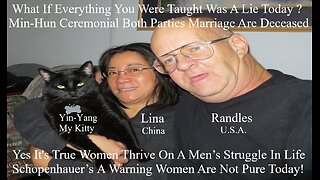 27:25
27:25
What If Everything You Were Taught Was A Lie?
9 days agoYes Women Thrive On A Men’s Struggle In Life Schopenhauer’s Warning Women Are Not Pure Today
2.18K4 -
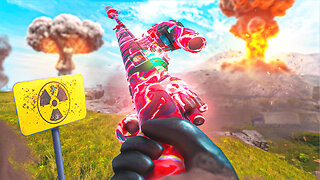 LIVE
LIVE
GritsGG
1 hour agoWin Streaking! Most Wins 3485+ 🧠
16 watching -
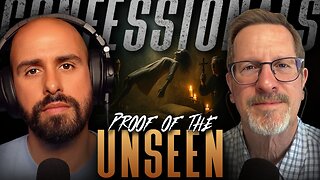 1:02:09
1:02:09
The Confessionals
21 hours agoThe Supernatural Proof You Can’t Ignore (When Angels and Demons Showed Up) | Lee Strobel
30.5K22 -
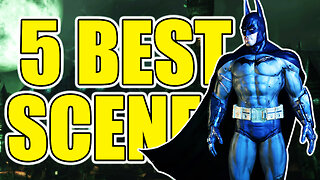 15:24
15:24
Degenerate Jay
21 hours ago $0.76 earned5 Best Moments In Batman: Arkham Asylum
14K -
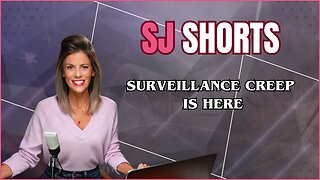 12:24
12:24
The Shannon Joy Show
15 hours ago🔥From Flock Cameras to Palantir: America’s Expanding Digital Cage🔥
11.8K2 -
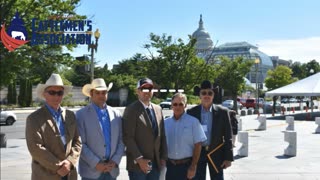 2:03:45
2:03:45
BEK TV
1 day agoTrent Loos in the Morning - 8/27/2025
12.2K -
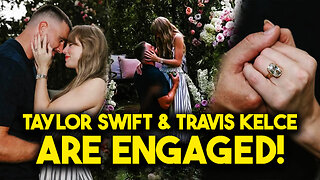 LIVE
LIVE
The Bubba Army
23 hours agoTaylor Swift & Travis Kelce ENGAGED! - Bubba the Love Sponge® Show | 8/27/25
1,316 watching -
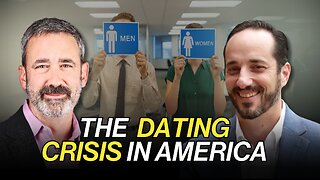 40:14
40:14
Uncommon Sense In Current Times
18 hours ago $2.57 earnedThe Dating Crisis in America | J.P. De Gance on the Church’s Role in Restoring Family & Faith
47.1K6 -
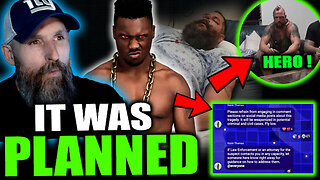 12:35
12:35
Red Pill MMA
20 hours agoNow We Know The Truth.. Hero Who Stopped Raja Jackson Speaks Out
18.1K8 -
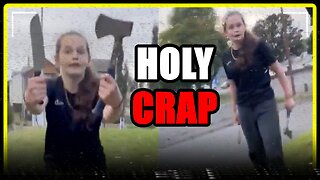 8:03
8:03
MattMorseTV
19 hours ago $9.35 earnedThings in the UK just got INSANE...
98.2K139